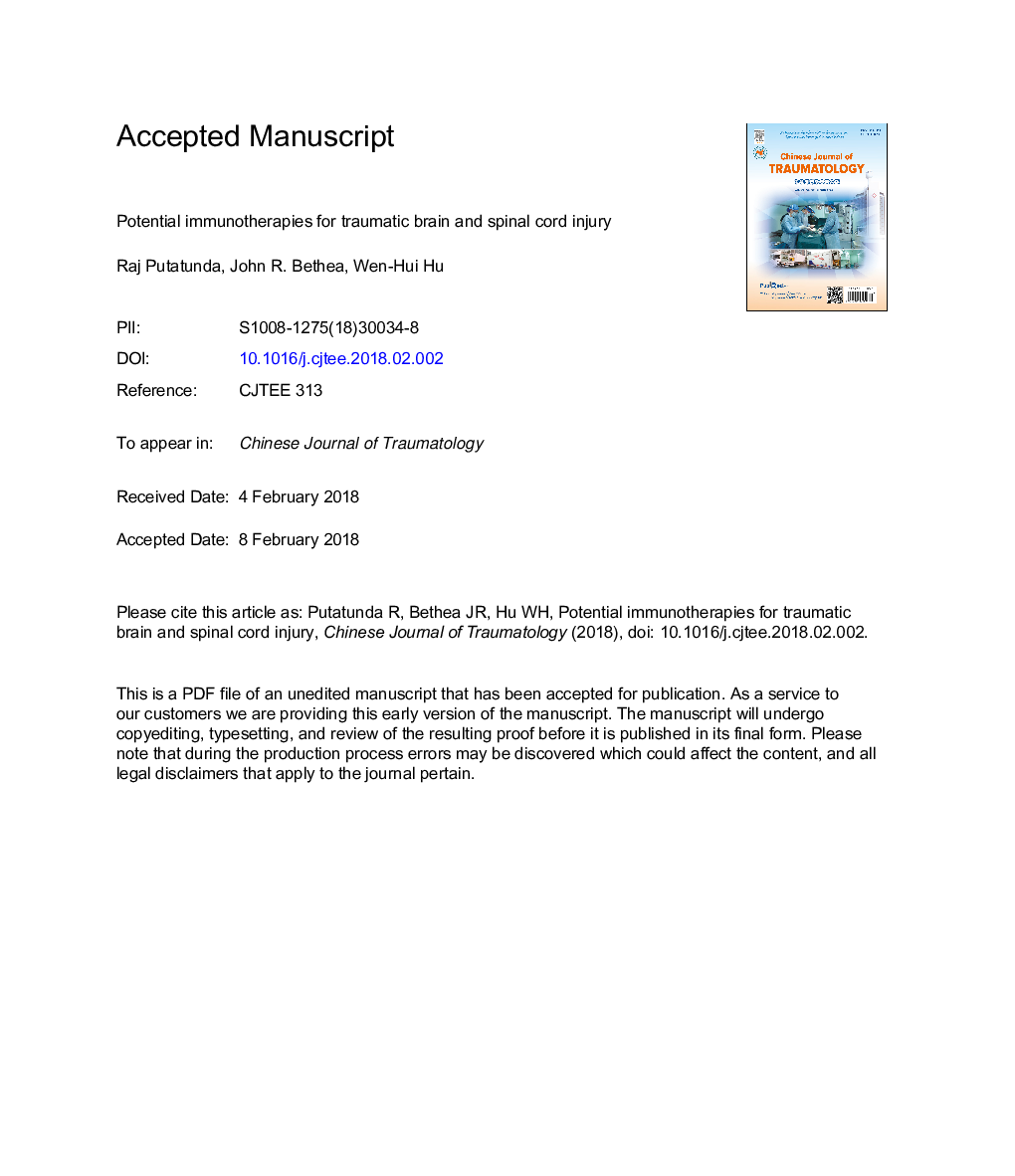| Article ID | Journal | Published Year | Pages | File Type |
|---|---|---|---|---|
| 8694875 | Chinese Journal of Traumatology | 2018 | 56 Pages |
Abstract
Traumatic injury of the central nervous system (CNS) including brain and spinal cord remains a leading cause of morbidity and disability in the world. Delineating the mechanisms underlying the secondary and persistent injury versus the primary and transient injury has been drawing extensive attention for study during the past few decades. The sterile neuroinflammation during the secondary phase of injury has been frequently identified substrate underlying CNS injury, but as of now, no conclusive studies have determined whether this is a beneficial or detrimental role in the context of repair. Recent pioneering studies have demonstrated the key roles for the innate and adaptive immune responses in regulating sterile neuroinflammation and CNS repair. Some promising immunotherapeutic strategies have been recently developed for the treatment of CNS injury. This review updates the recent progress on elucidating the roles of the innate and adaptive immune responses in the context of CNS injury, the development and characterization of potential immunotherapeutics, as well as outstanding questions in this field.
Keywords
HMGB1RAGEHDACPAMPTLRIVIgDAMPHspIntravenous immunoglobulin GAPCASCTBINLRECMNFκBTraumatic brain injurySecondary injurybrain injurySpinal cord injuryantigen-presenting cellsdanger-associated molecular patternspathogen-associated molecular patternsimmunotherapyinterleukinCNSBBBT helper cellsCerebral Spinal Fluidcentral nervous systemscinuclear factor κBExtracellular matrixBlood-brain barrierCSFmajor histocompatibility complexMHCInnate and adaptive immunityhistone deacetylaseInflammatory responseHeat shock proteinsReceptor for advanced glycation end productsToll-like receptors
Related Topics
Health Sciences
Medicine and Dentistry
Critical Care and Intensive Care Medicine
Authors
Raj Putatunda, John R. Bethea, Wen-Hui Hu,
